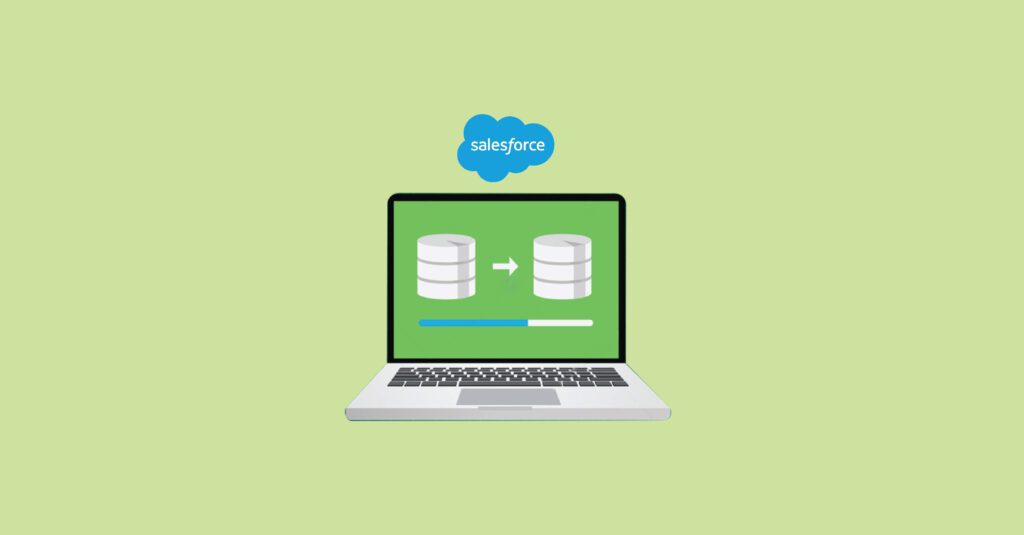The data migration task in Salesforce involves multiple challenges. There will be challenges to face, like:
- Deletion of duplicate data manually in Excel
- Large data situations often result in Excel hanging up constantly.
- Checking for similar data sets through VLOOKUP again and again can be tedious.
- The entire data duplication is for production and the UAT environment.
- Difficulty applying the complex transformation to your data sets
All these challenges in data migration in Salesforce can be handled easily and wisely with the help of Talend. Now, it is imperative to know what Talend is.
Details about Talend
Talend is an integration platform, and it is open-source software too. It is a great help to turn all your data into business insights quite easily and effectively. Here, data migration is all about addressing a particular necessity. Here, Talend is widely used as an ETL for data migration needs in Salesforce. It is very common to select a data migration based on needs. There is a wide array of data migration tools available currently. The logic is all about addressing specific objectives and goals for the business. As mentioned above, ETL is the best choice, and let us see what makes it the best match:
- It is quite compatible with Salesforce.
- It is highly scalable.
- It is relatively cost-effective.
- It is quite easy and simple to transform your data into the required formats.
- You can develop a data model easily with it.
Talend suitability for data migration
It is important to learn what data migration is first before entering into details about Talend’s suitability. Data migration is the process of transferring data from one location to another. Here, transfer systems can be seen as file formats or data storage formats. Data is here transferred from one system to another, but a specific mapping pattern is important to deploy here. The entire migration process involves Talend extracting data from the system, defining and applying logic for transformation, and then ensuring that the transformed data is successfully pushed to the desired destination. The below image can give you an overview of the mentioned data migration process.
The detailed process of data migration is mentioned below in a step-by-step manner:
- Data Source: Importing data for the sourcing system is the first step, and Talend will do it according to the requirements. It processes data that is in multiple and different formats and types from the sourced system.
- Cleaning Data: Data cleaning is the next important step in the process of data migration. There will be some incorrect or inaccurate data sets, and those will be detected, corrected, or removed. Also, as part of data cleaning, it is important to find out incomplete, irrelevant, and inaccurate data parts. Modify, replace, or delete some of the coarse or dirty data. All these actions will result in the cleaning of the data.
- Deduplication of Data: Now, after cleaning the data, it is imperative to remove the data’s duplicate copies from the data sets according to the fieldset that was pre-approved.
- Transformation of Data: Now, transform the entire source system into a target.
- Uploading Data: Once the data transformation is complete, it is essential to upload it to the target system. Here, Talend is a great help by accepting and supporting multiple platforms like SQL Server, Excel, and Salesforce.
Why Talend is the best match
There are many reasons to list if you ask why Talend is the best match, and those are:
- Open Source: The important reason to choose Talend is that it is open-source software. It indicates that there will be no cost associated with it being open-source. It is the reason it is also called TOS “Talend Open Studio”. If the usage is joint data collaboration, there is a chance to incur a cost. Talend is open source at some level; if we need to get more features like version control and more components, then we should go for the enterprise edition (paid version).
- Multi-Format Support: Talend is the best data migration software due to its capability to support multi-formats. It is possible to extract data directly from Salesforce and transform it, and then you can push it to Salesforce without the need for any additional databases or Excel. Similarly, there is no necessity for an org-to-org connection, as Talend can extract, manipulate, and load your data from Salesforce due to its capability to support all types of Excel formats.
- Faster: data processing and its transformation are faster with Talend than with Excel. Talend offers certain functionalities here to change the format and append new data over the existing one, besides creating and removing columns while the process is in progress.
- Reusable: You can push Talend-created data to the end number of targets with no necessity to process data multiple times. The processed data can be sent easily to different environments, such as production or UAT. If there is a necessity for future modifications, then it requires appending the same process to avoid doing data transformation once again.
- Complex Data Transformations Support: Talend is equipped with certain tools that are good to perform complex data transformations, and they will manipulate that data too. Also, there is a possibility in Talend to write Java-based custom scripts to perform exclusive, complex custom transformations.
- Large Volumes: Talend can process any kind of huge volume of data that is, in general, difficult and complex to manage in Excel.
There are many tools available on the market to perform data migration tasks, but Talend is proving to be a wise option due to the salient points above. Many businesses are trusting and using Talend for their data migration needs. Here, Cloud Odyssey has always proved to be the best source for Talend-based data migration needs, especially Salesforce data migration needs. The functionalities intertwined in Talend make accessing and processing data quite easy and seamless.



